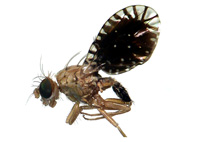Abstract
The characid genus Oligosarcus consists of 20 described species distributed throughout most of South American river basins below 14º south latitude. This study focus on the phylogenetic relationships of the species of Oligosarcus based on the analysis of osteological characters to provide data to discuss the biogeographic history of the genus. The analysis resulted in a single most parsimonious tree with 152 steps (CI= 0.355 and RI= 0.600). The 18 included Oligosarcus species were hierarchically organized into 17 clades. A minimal age of 15 Ma for the genus is suggested based on the putatively cladogenetic event represented by the continued shortening of the Eastern Cordillera that established the eastern boundary of the modern central Andean plateau and was responsible for cladogenesis between the common ancestor of O. schindleri + O. bolivianus versus the remaining congeners. There is a pronounced disjunction in the upland species distribution by the lowland areas of the Chaco-Pantanal basin. This indicates that upland habitats (headwater streams) are preferential habitats for a set of species including O. argenteus, O. bolivianus, O. brevioris, O. paranensis, O. perdido, O. pintoi, O. planaltinae, O. brevioris, and O. schindleri. Fragmentation of populations of O. pintoi and O. perdido are at least 2.5 Ma old, since the origin of the upper Paraguay depression clearly promoted the present-day observed disjunction in the distribution of these species. The lowland Oligosarcus species are all included in a single clade but the obtained results suggest that fragmentation of upland versus lowland components of the genus was not causally related to a single vicariant event. The available fossil record of Oligosarcus indicates that the genus already occurred in the coastal plain at about 2.3 to 1.25 Ma. The sister-group relationship between O. hepsetus and O. longirostris provided additional evidences of the so-called historical affinities between the SE Brazilian coastal plain and the Rio Iguaçu drainage basin.

